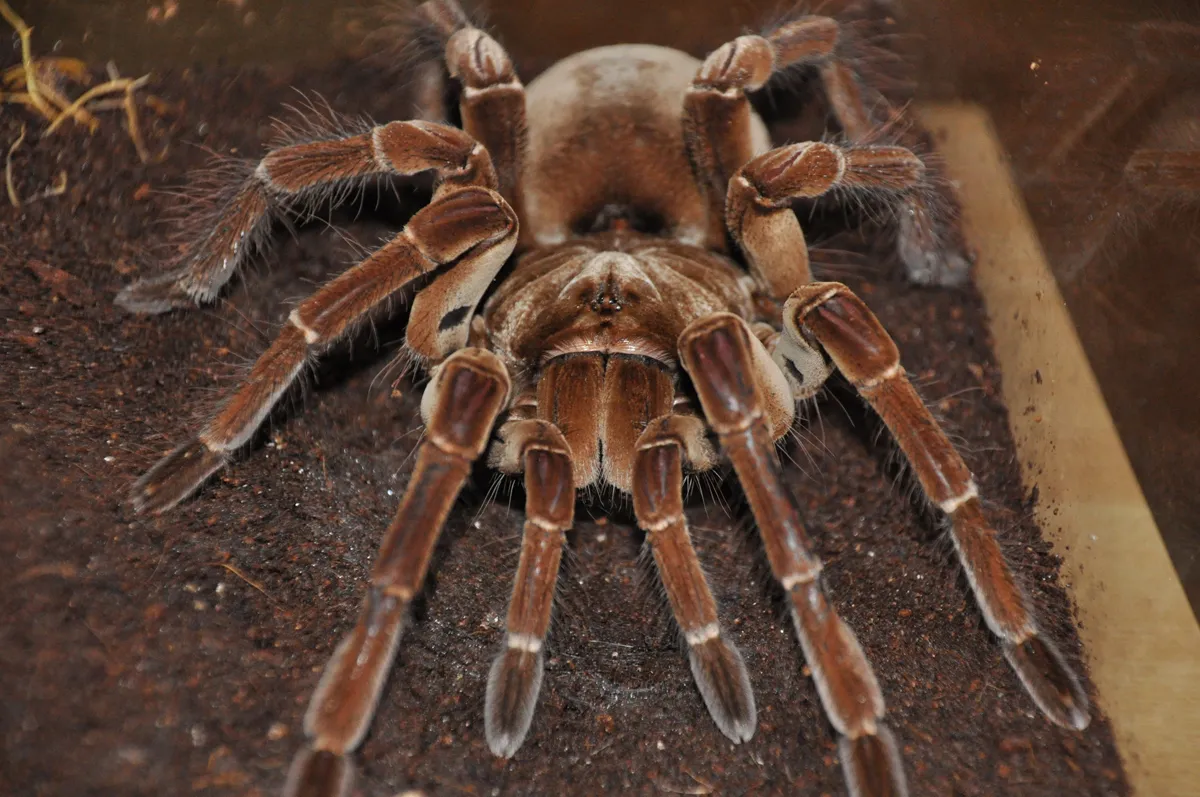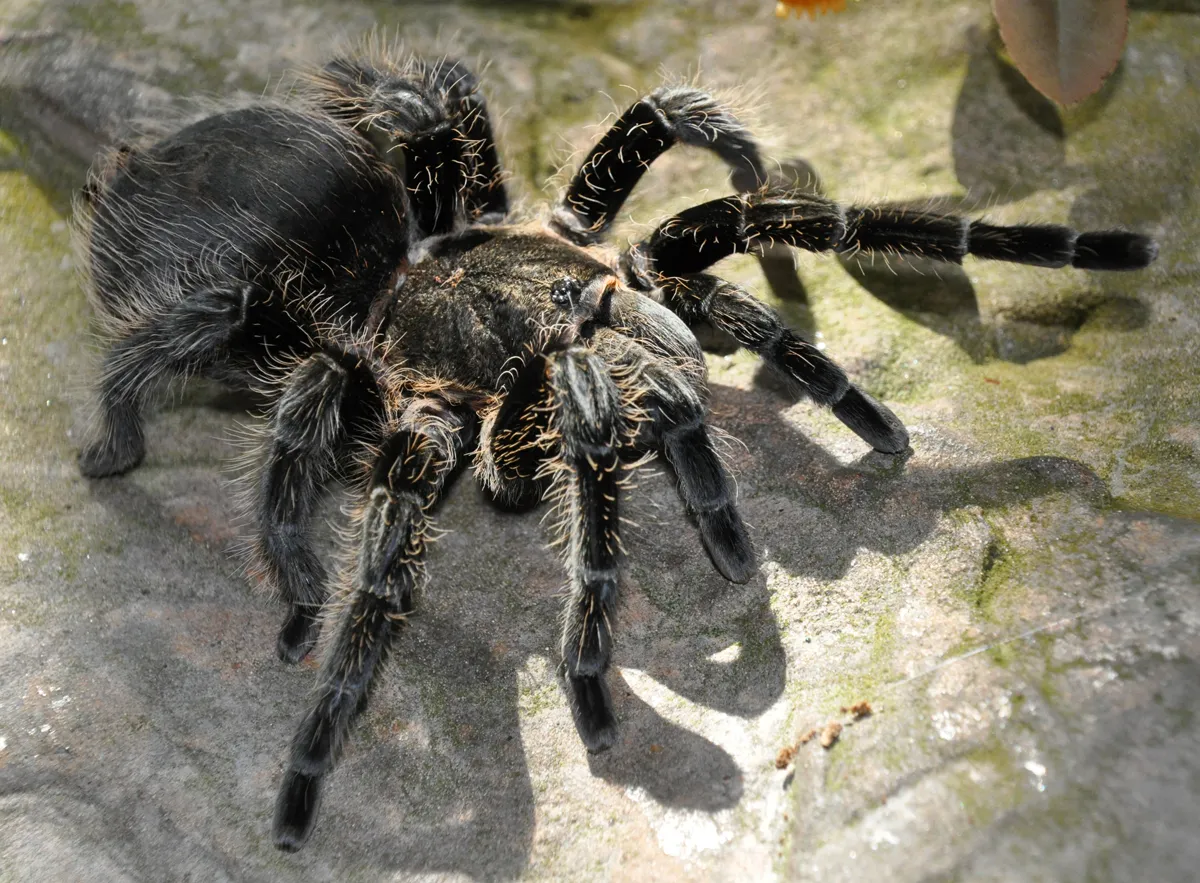Goliath Birdeater Tarantula Adaptations Top 5
The Goliath Birdeater tarantula, Theraphosa blondi, is a truly remarkable creature, the largest spider in the world by mass. Native to the rainforests of South America, this impressive arachnid has evolved a range of fascinating adaptations that allow it to thrive in its challenging environment. Understanding these adaptations provides a glimpse into the intricate strategies this spider employs to survive, from constructing burrows to defend itself against predators. This article will explore the top 5 survival adaptations that enable the Goliath Birdeater to flourish in its natural habitat. These adaptations showcase the marvel of evolution, highlighting how this giant spider has conquered its environment.
Burrowing and Habitat Adaptations
One of the primary survival strategies of the Goliath Birdeater is its ability to create and utilize burrows. These burrows serve as a safe haven, protecting the tarantula from both predators and the harsh environmental conditions of the rainforest floor. The construction and maintenance of these burrows are crucial aspects of the spider’s survival, providing shelter, regulating temperature, and maintaining necessary humidity levels. This behavior is a key adaptation that allows the Goliath Birdeater to conserve energy and avoid the dangers of the open environment.
The Goliath Birdeater’s Burrow

The Goliath Birdeater constructs its burrows by excavating soil, usually near the roots of trees or under rocks, where the soil is more stable and offers better protection. The burrow typically consists of a tunnel-like structure, often several feet deep, with a chamber at the end where the spider resides. The spider lines the inside of the burrow with silk to stabilize the walls and create a comfortable environment. The construction of these burrows is a time-consuming process, but it’s an essential adaptation for the spider’s survival, providing a secure base of operations.
Importance of Humidity and Temperature
The Goliath Birdeater’s burrow helps regulate the temperature and humidity, critical factors for its survival. The rainforest environment can fluctuate greatly in temperature, and the burrow provides a stable microclimate. Furthermore, high humidity is essential for the tarantula’s respiratory system, allowing it to breathe properly. The burrow’s structure, combined with the spider’s behavior, helps maintain the necessary humidity levels, preventing desiccation. The spider often seals the entrance of its burrow during dry periods to conserve moisture, showcasing a sophisticated understanding of its environmental needs.
Defensive Adaptations Against Predators
The Goliath Birdeater faces threats from various predators, including larger animals and other spiders. To survive in its environment, it has developed several defensive adaptations. These mechanisms work in tandem to deter potential threats, ranging from physical defense strategies to chemical ones. Understanding the different ways the Goliath Birdeater protects itself is essential to understanding its survival strategy. These adaptations contribute significantly to the tarantula’s ability to thrive in its environment, increasing its chances of survival against various dangers.
Urticating Hairs as a Defense Mechanism

One of the most notable defensive adaptations of the Goliath Birdeater is its use of urticating hairs. These are fine, barbed hairs located on the abdomen of the spider. When threatened, the tarantula flicks these hairs towards its aggressor, causing severe irritation. The hairs embed themselves in the skin and mucous membranes, leading to intense itching and discomfort, which is a highly effective deterrent against many predators. This clever defense strategy makes it a less desirable target for many potential attackers. The irritation can last for several days or even weeks, making the Goliath Birdeater less vulnerable.
Bite and Venom
While the Goliath Birdeater’s bite is venomous, it is not generally considered deadly to humans. However, the bite can be quite painful, and the venom may cause localized symptoms such as pain, swelling, and muscle cramps. The venom serves primarily as a defense mechanism and also aids in the initial stages of breaking down prey. The spider also has large fangs, which it uses to inject the venom and secure its grip on its prey. The combination of the bite and the venom contributes to the spider’s overall survival strategy, giving it a powerful tool for both defense and hunting.
Hunting and Feeding Adaptations
The Goliath Birdeater is a formidable predator, and its hunting and feeding adaptations are critical for its survival. These adaptations enable it to capture, subdue, and consume a wide variety of prey. The spider’s hunting strategy combines both ambush tactics and efficient digestion techniques. These are not only essential for its survival but also highlight its predatory prowess. From its hunting style to the method of consuming its meal, every aspect helps ensure its survival.
Ambush Predator Strategy

The Goliath Birdeater is an ambush predator, meaning it waits patiently for its prey to come within striking distance. It often positions itself at the entrance of its burrow or in a concealed location, ready to pounce on unsuspecting animals. Its excellent eyesight and sensitive sensory hairs help detect the movement of potential prey. The tarantula strikes with lightning speed, using its large fangs to deliver a venomous bite and hold on to its struggling meal. This ambush strategy conserves energy and increases its chances of a successful hunt. The speed of the strike is key to its hunting success.
Digestive Enzymes and Feeding Habits
Once the Goliath Birdeater has captured its prey, it uses a combination of its bite and digestive enzymes to begin the breakdown process. The spider injects digestive enzymes into its prey, which liquefy the internal organs. It then sucks up the resulting nutrient-rich liquid. This external digestion process is a common adaptation among spiders, allowing them to consume their prey more efficiently. The Goliath Birdeater can feed on a variety of insects, small mammals, and even birds, making it an opportunistic predator within its ecosystem.
Molting and Growth Adaptations
Like all arthropods, the Goliath Birdeater must molt its exoskeleton to grow. This process, called ecdysis, is a critical adaptation for its survival. Through molting, the spider sheds its old exoskeleton and reveals a new, larger one. This allows the spider to grow in size while also shedding any parasites or damaged body parts. Molting is a vulnerable period, making the spider more susceptible to predators, but is essential for its long-term survival and development. Molting demonstrates the life cycle of the tarantula.
Molting Process

The molting process begins when the Goliath Birdeater secretes enzymes that separate its old exoskeleton from its underlying tissues. The spider then absorbs fluids, which cause the new exoskeleton to swell and split open, typically along the carapace. The spider slowly wriggles out of its old exoskeleton, leaving behind a perfect cast of its previous form. The process can take several hours or even days, during which time the spider is extremely vulnerable. This is a period of intense physical strain, followed by a period of growth.
Growth Stages and Size
After molting, the Goliath Birdeater’s new exoskeleton is soft and pliable. It gradually hardens over the next few days or weeks, during which the spider grows to its new size. The Goliath Birdeater molts several times throughout its life, with each molt increasing its size. Females typically continue to molt for many years, while males often stop molting after reaching maturity. The Goliath Birdeater can reach an impressive size, with a leg span of up to 12 inches, making it one of the largest spiders in the world.
In conclusion, the Goliath Birdeater tarantula is a remarkable example of adaptation. Its survival is a testament to the power of evolution. Its burrowing behavior, defensive mechanisms, hunting strategies, and molting process all contribute to its ability to thrive in the challenging rainforest environment. The Goliath Birdeater’s adaptations are not only fascinating from a scientific perspective, but also highlight the delicate balance of nature and the incredible resilience of life on Earth. The Goliath Birdeater’s success is a compelling story of how specialized traits contribute to survival.
